Global numbers of free living honey bees
Do free-living honey bee colonies really outnumber managed hives by 3:1? How was this determined, what assumptions were made and why don’t I see occupied trees when I’m out walking?
Introduction
Why are the copses, coppices and thickets of the UK (or for that matter Europe or much of North America) not filled with large numbers of free-living honey bee nests?
As a biologist who has worked on Varroa and the devastating consequences of mite infestation my answer would be that the introduction of this ectoparasite to a honey bee population – whether managed or free-living – provides the explanation.
The reported annual losses by beekeepers – regularly ~20% and often exceeding 30% in large-scale surveys – usually cite Varroa as a cause of the losses and so supports the view that Varroa has a devastating impact on honey bees populations.
I remain sceptical of the methods used in these annual surveys, their accuracy and the conclusions that can be drawn from them (but I don’t disagree about the importance of Varroa) {{1}}.
Does a reduction in losses (remember these are self-reported and unverified) from 27% to 22% represent a marked improvement in beekeeping?
Of course not … it’s just ‘noise’.
Nevertheless, the frequency with which Varroa or the viruses it transmits – predominantly deformed wing virus (DWV) – is mentioned as the explanation for the losses incurred clearly (albeit relatively unscientifically) supports the view that Varroa is bad news for bee populations.
Of course, at an individual level, many beekeepers learn this lesson the hard way when they lose their colonies overwinter.
Santa Cruz Island
And then there was the use of Varroa to eradicate honey bees on Santa Cruz Island. Honey bees had been introduced to the island in the mid-19th Century; inevitably swarms were lost and became established as free-living colonies.
As part of a larger programme of non-native plant and animal eradication on Santa Cruz Island plans were drawn up in the late 1980’s to eliminate honey bees.
Physical destruction of colonies and nest sites over a 5 year period reduced the honey bee numbers by ~75%. However, the stragglers – probably 50+ colonies – were in inaccessible locations.
Rather than open-feeding using poison-laced baits (which might have devastated native insect population as well) Varroa was introduced. For 2-3 years honey bees remained present but then, in 1997, they effectively disappeared from the island.
This timing fits with the known impact on Varroa where, if unchecked, mite number build up to devastating levels over a couple of seasons.
After 1997 only one colony was found (and destroyed) and no honey bees have been detected on the island since 2004.
So … the introduction of Varroa caused the eradication of the entire honey bee population.
Well … not quite.
- Firstly, 75% of the colonies had already been ‘manually’ destroyed.
- Secondly, all colonies were derived from a small number of founding colonies so inbreeding – and the consequent loss of colony fitness – was probably a contributing factor (and likely would become more significant as colony numbers reduced).
- Finally, being an island, the population was ‘closed’ with no chance of the introduction of some revitalising novel genetics.
Rebounding colony numbers
Although Varroa probably helped ‘finish off’ the Santa Cruz honey bees there are other examples where free-living colony numbers, although probably initially reduced (perhaps massively) after Varroa introduction, subsequently rebound.
Free-living colonies in the Arnot forest
Thomas Seeley has studied honey bees in the Arnot forest in western New York State for many years. These studies included surveying colony numbers and distribution in 1978, 2002 and 2011, a 33 year period spanning the introduction of Varroa (Seeley, 2007).
Notably, colony density remained broadly unchanged (at ~1/km2) after the introduction of Varroa, with the caveat that I’m not sure precisely when the mite arrived in the forest (it arrived in New York State in 1987). A precipitous drop in colony numbers may have occurred but been followed by a recovery period in which numbers of the now mite-infested colonies increased to pre–Varroa levels.
In a way this doesn’t matter … the point is that there remains a free-living population of honey bees at similar densities to those before the mite was introduced.
The absolute density – with colonies spaced ~1 km apart – possibly reflects the availability of nest sites (which I’ll discuss next week) or the forage availability in the environment.
Blenheim bees
The Arnot forest bees are probably some of the best studied in terms of numbers, distribution, pathogen levels and potential mechanisms of tolerance or resistance to Varroa, but they are by no means the only free-living, mite-infested population of honey bees {{2}}.
Closer to home, I’ve previously discussed ‘ancient’ populations of honey bees living – unmanaged – in woodland near Oxford, UK. Whether they’re ancient or not (and I suspect not, both for reasons explained in a follow up post and because I’ve seen nothing more about the DNA analysis of their genetic ‘uniqueness’) doesn’t alter the fact that there are bees in some woods … which brings me back to the opening sentence of the introduction.
Definitions
I was {{3}} careful in my choice of words for the opening sentence of the first paragraph.
Why are the copses, coppices and thickets of the UK (or for that matter Europe or much of North America) not filled with large numbers of free-living honey bee nests?
This is the first of two related posts on feral bees in the environment and with writing efficiency in mind I’m using the same opening sentence for both.
Rather than dwell on the known impact of Varroa and the viruses it transmits, I instead want to discuss the numbers and location of free-living honey bee colonies.
I also want to avoid the thorny topic of whether the bees that are present in the woods are recent escapees or have been free-living for decades (or centuries as is sometimes claimed, despite the fact there may be no supporting evidence {{4}} ).
However, some of these distinctions are important.
Wild vs. feral
Are the any ‘wild’ honey bees in continents where large numbers of managed colonies exist? Varroa can decimate honey bee populations, the mite has a near-global distribution and beekeepers regularly lose swarms.
Since there are managed colonies in all continents except Antarctica the opening question of this section could be simplified to ’Do wild honey bees (Apis mellifera) still exist?
I don’t want to get bogged down in the distinction between ‘wild’ colonies and those that have escaped management – by swarming – and should perhaps therefore be considered ‘feral’, defined by the OED as:
Of an animal: Wild, untamed. Now often applied to animals or plants that have lapsed into a wild from a domesticated condition.
Except of course, bees aren’t really domesticated (again, OED’s definition, my bold text):
Of an animal: that has been adapted to live in close association with and for the benefit of humans, esp. through selective breeding over time to alter its behaviour, appearance, etc.; tamed, not wild; kept as livestock or as a pet.
What a minefield!
Free-living
In a way this is all semantics. When does a lost swarm (whether initially considered feral or not) become wild?
Once it reproduces (swarms), presumably the following year?
Or after living unmanaged for three generations, or 30, or 300?
For this reason astute readers will note that I’ve used the term ‘free-living’ for the majority of this post.
The term encapsulates two important concepts;
- free i.e. not managed or maintained.
- living i.e. not dying … a fundamental distinction, important both to the bees and in our understanding of their status. Many studies show that recently escaped swarms usually die within a year or so. For example, consider the colonies populating black woodpeckers nests in German beech forests (Kohl and Rutschmann, 2018). A free-living population should be self-sustaining and not reliant on the annual influx of swarms lost from (mis)managed hives.
So, that’s what I’ll try and stick with.
This is perhaps a pity as the paper I want to discuss for the remainder of the post is titled:
Density of wild honey bee, Apis mellifera, colonies worldwide.
Oops.
This study (Visick and Ratnieks, 2023) is a meta-analysis of wild free-living honey bee colony densities around the world.
Meta-analysis
A meta-analysis involves the ‘statistical integration of evidence from multiple studies that address a common research question’ {{5}}. When trying to draw broad conclusions it is considered more powerful than single case or even well-controlled experiments.
For example could you draw any conclusions about the numbers of free-living honey bee colonies in North America if the only data you had are from the 8-10 colonies present in the small region of the Arnot forest that Thomas Seeley studied?
Well, you could draw conclusions, but they probably would not be very informative … or accurate.
But if you had a dozen studies from representative and dispersed regions of North America, ideally conducted by scientists using similar methods and with the same rigour, then things start to get a bit more meaningful.
Or, better still, 200 studies.
The combination of large numbers of studies and the use of comparable and quantified methods can produce really compelling evidence. This is the way some drug trials are analysed and validated, in studies costing tens of millions of dollars {{6}}.
But we don’t live in an ideal world and honey bee research involves tens of dollars, not tens of millions {{7}}, so we have to cope with smaller numbers of studies conducted by different scientists using a variety of methods.
Visick and Ratnieks (2023) reviewed 40 studies on colony density from 41 locations around the world. These various studies were published in ~55 papers over a 50 year period.
Estimates of free-living honey bee populations
Colony density was determined {{8}} using direct (observation, bee-lining, local knowledge) or indirect (mainly genetic analysis of workers or of drones from drone congregation areas) methods and related to the region in which the survey was conducted, the area surveyed, the local climate and managed colony numbers
Mean regional densities were highly variable, from 0.26/km2 in Europe to 6.8/km2 in Africa. In North America the mean density was 1.4/km2.
Survey area
Density was inversely related to area surveyed (below above) which may reflect survey bias; for example, smaller bee-rich areas may have been selected, or the effort needed to locate colonies in large areas was not expended.
Compare the two diagrams below. On the left a ‘biased’ survey focusing only on the area with the red border – which is 1/16th the area of the blue square – would grossly overestimate colony density within the blue border. Conversely (on the right) since finding just one colony is time consuming, large survey areas risk missing nests, leading to an underestimate of colony density.
Survey areas of <1 km2 were excluded as some had wildly unrealistically high colony densities.
But what is the ‘survey area’ in studies which ‘indirectly’ measured colony density by trapping workers or drones and analysing their genetic diversity? For these the area was assumed to be 4.5 km2 for workers or 2.5 km2 for drones. These figures were derived from average queen or drone mating distances of 1600 m or ~900 m respectively {{9}} .
Regional temperatures
Colony densities were related to temperature (see graph above), peaking at a mean annual temperature of 23°C.
Temperature influences both the ability of bees to forage and the availability of forage during the year. Sub-tropical regions are likely to have more forage available for longer periods of the year and have temperatures better suited for foraging (which other studies have shown is ~20°C).
However, in really hot areas colony density was reduced, presumably due to other factors like drought or the cooling effort needed to prevent comb collapse.
What is the mean temperature in the UK?
I’ve assumed that Visick and Ratnieks are using the arithmetic mean of the temperature, rather than some other form of mean and/or peak daytime temperature. Part of the reason I’ve assumed this is I have figures for UK average temperatures:
It varies from year to year by a degree or so, it varies geographically and (though not shown in this figure) it is inexorably rising. 2003 was reasonably typical for the last two decades, 2013 was unusually cold and 2023 warmer than usual (at least for the South and Midlands).
At 11-12°C our mean annual temperatures are well below optimum for honey bees. One reason the temperature is so low is because of our protracted cool/cold winters.
Beekeepers know – and likely some will be reminded of this is the next few weeks – that these winters can significantly reduce colony survival (therefore also reducing free-living colony densities).
Assumptions (again) and conclusions
Inevitably, in a study considering global free-living honey bee densities, based upon work spanning at least 50 years from multiple authors using a variety of survey methods, there are a large number of assumptions made.
For example, almost half of the European studies were conducted in large geographic areas where colony numbers were probably underestimated.
Nevertheless, if the regional colony densities are applicable across each region, this meta-analysis suggests that total free-living colony numbers may be two to three times higher than global managed hive numbers (which currently exceed 102 million).
That sounds surprisingly high … but then I live in one of the largely blue areas in the maps above, so tend not to see too many colonies surviving outside a poly hive.
The UK has an area of ~250,000 km2. Assuming the free-living colony density is 0.26/km2 that would mean the ‘copses, coppices and thickets’ of this country harbour about 65,000 colonies. For comparison, current numbers of managed colonies exceed ~288,000 (i.e. a density of ~1.2/km2).
Walking in the woods
Although I’ve rarely deliberately searched for free-living colonies, I have walked many, many miles in Scotland and the Midlands over the last couple of decades … and I’m reasonably observant.
The Midlands particularly are densely populated with managed hives (~275 apiaries within 10 km of mine, implying a managed hive density of over 4/km2) and the beekeepers there inevitably lose large numbers of swarms {{10}}. Despite this, I only rarely found free-living colonies, and their density would probably have been much less than 0.26/km2.
The few I have found have almost all been in man-made structures; church towers, university halls of residence, a war memorial etc., with none that I can remember in ‘copses, coppices and thickets’.
Perhaps I’m looking in the wrong place?
I’ll return to that topic next week.
North America
Free-living colonies in North America were predicted to outnumber managed hives 7:1, with the densities being 1.4 and 0.2/km2 respectively.
It’s fair to say that there was considerable scepticism about some of these estimates on Bee-L, a discussion board largely populated by naturally aporetic {{11}} scientific-leaning beekeepers based largely in the US.
Southern California might contain large numbers of free-living colonies, but surely not the Pacific Northwest, the Dakota’s, Minnesota and Michigan (think of the winters!), or the damp North Atlantic seaboard?
Inevitably the Bee-L discussion degenerated ended up debating the definition of ‘wild’, ‘feral’ and ‘free-living’.
Africa
Africa had a similar free-living to managed colony ratio to North America, but there are more of both.
The biology of the honey bee (Apis mellifera scutellata) in Africa is interesting. The high temperatures mean that brood rearing and comb building can occur year-round … if there is sufficient forage and/or water available.
When there is, the colonies expand but then tend to swarm before they get very large.
However, when forage or water are limiting – for example due to a local drought – the colony migrates. It absconds, flying 10’s of kilometres to areas with better conditions.
The ‘swarminess’ of scutellata probably accounts for the large number of free-living colonies. It also explains why beekeepers can hang out log hives with an expectation they will be occupied.
Finally, think back to my post two years ago on honeyguides {{12}}. It’s probable that this mutualistic relationship could not have evolved without large numbers of free-living honey bee colonies.
Where are all these free-living colonies?
How do these calculations of free-living honey bee colonies help?
If accurate, or at least broadly representative, they will help in determining their contribution to ecosystem services i.e. human benefits from the natural environment/ecosystem. For example, crop pollination.
Similarly, they may help understand the impact of climate change, pathogen introduction and spread, or natural selection for disease resistance.
However, if they are wildly inaccurate they are likely to lead to incorrect conclusions about these or other things. Follow-up surveys are needed to validate both the results that this meta-analysis are based on, and to determine how generally applicable the results are.
Some readers may notice that, ironically considering my comment about extrapolating North American numbers from the Arnot forest data, they are about the same!
The regional averages I have quoted are a bit misleading. A figure of 0.26/km2 in Europe does not mean you should expect to find one free living colony in every 4 km2 searched (left, above). Instead, the distribution will be uneven, with local concentrations interspersed by large empty areas (right, above).
Which of those ‘copses, coppices and thickets’ are occupied?
In the post next week I will discuss one way of potentially finding these ‘local concentrations’, without having to search all the empty areas.
References
Kohl, P.L., and Rutschmann, B. (2018) The neglected bee trees: European beech forests as a home for feral honey bee colonies. PeerJ 6: e4602 https://peerj.com/articles/4602.
Seeley, T.D. (2007) Honey bees of the Arnot Forest: a population of feral colonies persisting with Varroa destructor in the northeastern United States. Apidologie 38: 19–29 https://doi.org/10.1051/apido:2006055.
Visick, O.D., and Ratnieks, F.L.W. (2023) Density of wild honey bee, Apis mellifera, colonies worldwide. Ecology and Evolution 13: e10609 https://onlinelibrary.wiley.com/doi/abs/10.1002/ece3.10609.
{{1}}: I’ve made this point before and I wish someone would conduct a more scientific survey of losses – the results would be useful.
{{2}}: I’ve discussed several of these studies previously … you can probably find them by searching for ‘Arnot forest’.
{{3}}: Unusually?
{{4}}: Why let pesky facts get in the way of a good story?
{{5}}: Thanks Wikipedia, that’s why I donate.
{{6}}: Though they still sometimes produce incorrect conclusions.
{{7}}: That’s not quite true, but there’s a vast different between funding of biomedical vs environmental research.
{{8}}: In the referenced studies.
{{9}}: There were some specific exclusions to this – see the paper for details.
{{10}}: Collectively, not individually!
{{11}}: ‘Inclined to doubt’ … a word originating in the 17th Century but only recently getting more widely used.
{{12}}: Or read it for the first time; it’s an amazing story.
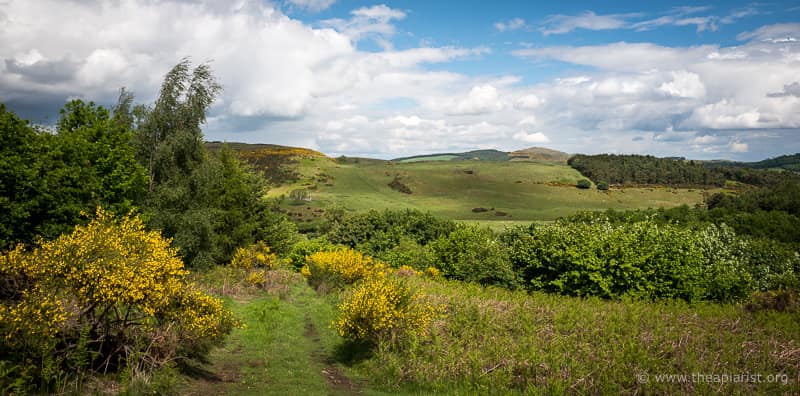

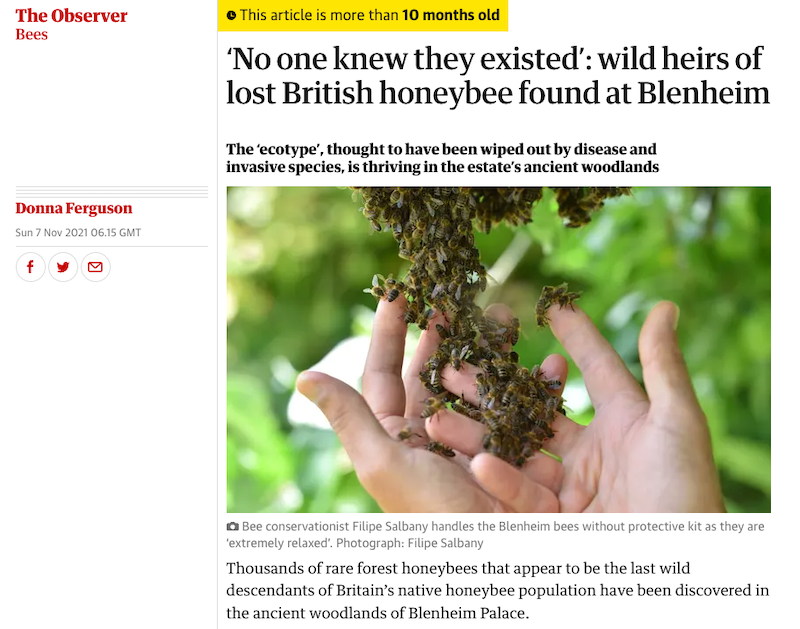
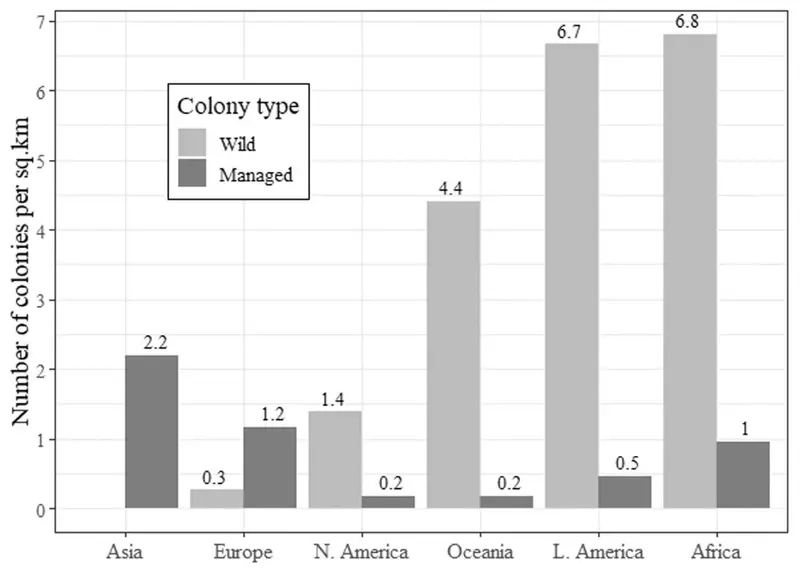
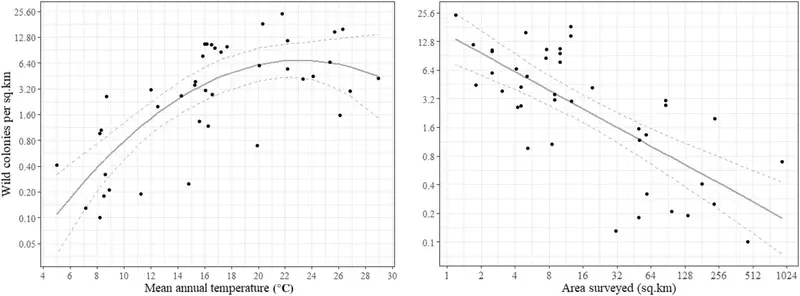
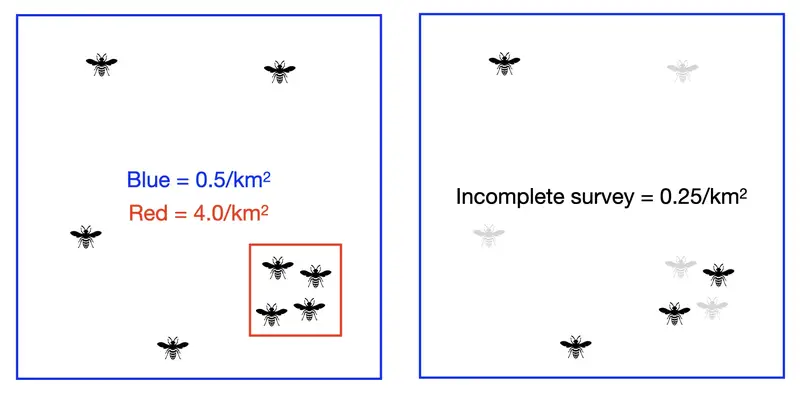
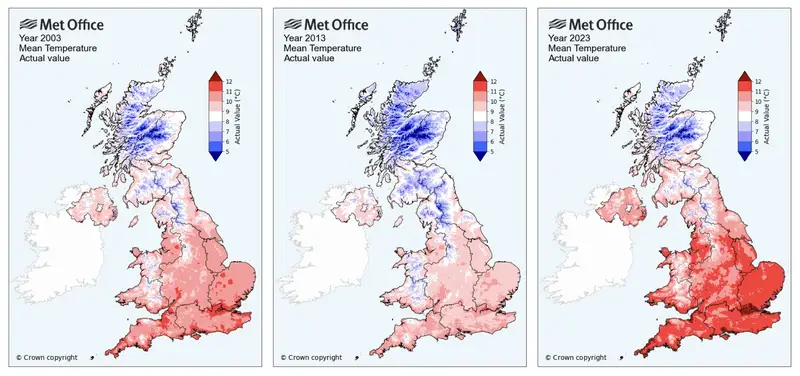

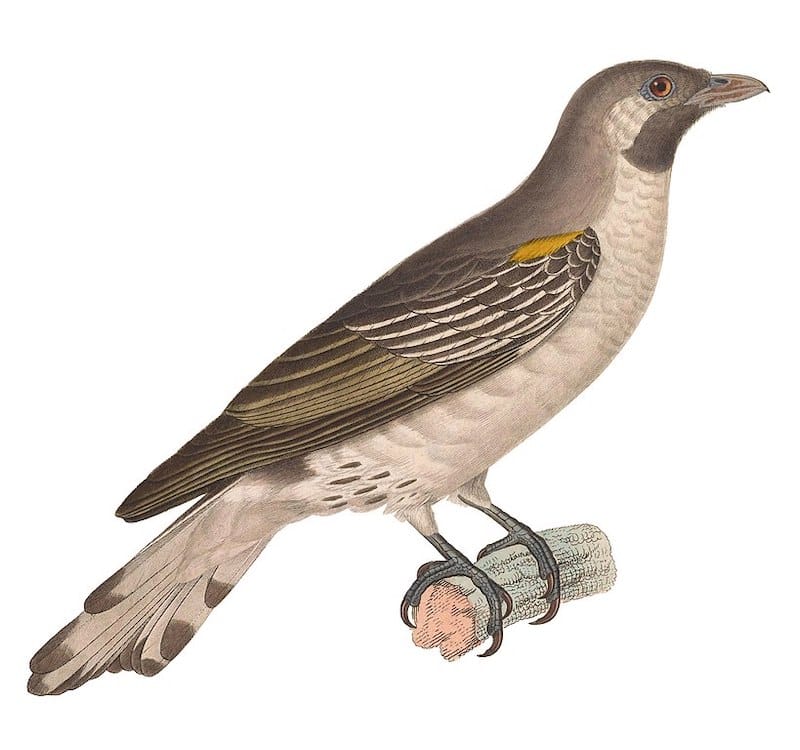
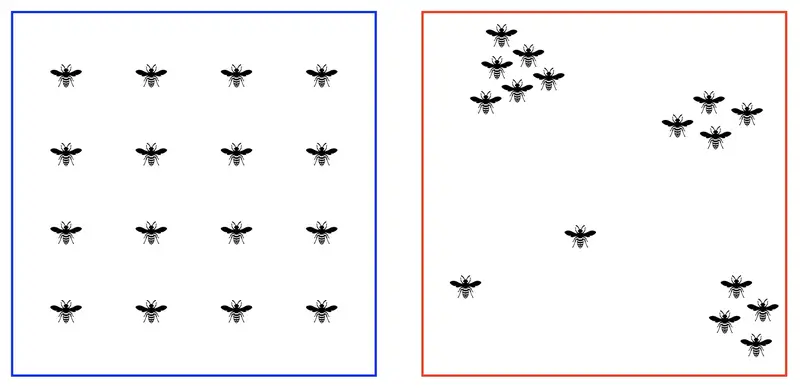
Join the discussion ...